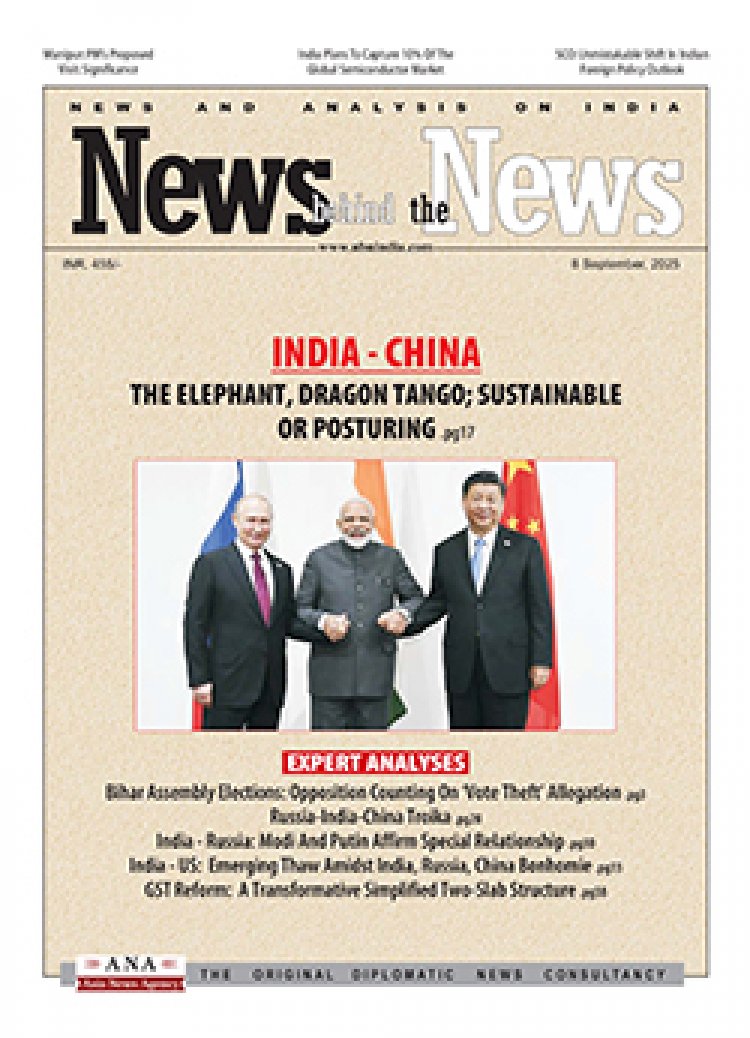Pakistan - China: Fishing In Troubled Bangladesh Waters
STORIES, ANALYSES, EXPERT VIEWS

Days after a top Bangladeshi military officer met Pakistan Army chief Gen Syed Asim Munir, a four-member team from Pakistan’s Inter-Services Intelligence (ISI) agency flew to Dhaka on January 21. This could be a fresh security challenge for India, according to Jayanta Kalita (Senior Editor • The Times Of India).
Pakistan obviously sees an opportunity in the ongoing crisis in Bangladesh to reset their ties. It may also be trying to convince Dhaka to treat India as their common enemy. Or, speculates Kalita, this could be ISI’s new strategy after its ‘failed experiment’ in Afghanistan.
Earlier, on January 14, Lt Gen SM Kamrul Hassan, principal staff officer of the armed forces division and the second-in-command of the Bangladesh Army, met Pakistani Army chief Gen Munir in Islamabad. This was the first time in as many years that the two countries have held such military-level meetings. Without naming India, Munir and Hassan ‘underscored the importance of a stronger defence relationship, emphasising that the enduring partnership between the two brotherly nations must remain resilient against external influences’.
This new bonhomie between ISI and Bangladeshi spy agency, the Directorate General of Forces Intelligence (DGFI), comes after 15 years of pause in their ties during Hasina’s rule. Hasina’s overtly anti-Pakistan stand had come to the fore when her Awami League government started prosecuting scores of people for allegedly colluding with Pakistan during the 1971 liberation war, following which Bangladesh was born.
ISI’s links with NE insurgents
ISI had deep links with armed separatist groups in India’s Northeast, many of whom have joined the mainstream after signing peace pacts with the Centre. The ISI had facilitated training for cadres of these rebel groups in the 1990s and 2000s.
The rebel groups included the United Liberation Front of Asom (Ulfa), the National Democratic Front of Bodoland (NDFB), Manipur’s People’s Liberation Army (PLA) and All Tripura Tiger Force (ATTF) whose members were sent to different locations in Pakistan to undergo training in arms and explosives. After their return, these groups had carried out subversive activities in their respective homelands, including attacks on both civilians and security forces.
Hasina controlled anti-India elements
Once a hotbed of armed separatist insurgency, Kalita notes the Northeast saw a 70% decline in violence in the past decade. Much of this is attributable to the erstwhile Hasina government’s crackdown on Indian rebel groups which had training camps and hideouts in the neighbouring country during Bangladesh Nationalist Party’s (BNP) tenure.
After her 2008 election victory, Hasina flushed out those separatist insurgent groups. Top rebel leaders of Ulfa, NDFB and the United National Liberation Front (UNLF) from Manipur were captured and handed over to India, thereby easing the latter’s security concerns.
The Myanmar angle: In recent years, the Centre has signed peace pacts with these organisations, although some of their factions such as Ulfa-Independent led by Paresh Baruah and Manipur’s PLA continue to operate from Myanmar.
Given the ongoing civil war in Myanmar, the possibility of these smaller rebel factions shifting to ‘safer’ locations like Bangladesh cannot be ruled out. And who else other than ISI is better placed to revive connections with such elements so as to foment fresh troubles for India!
Fears of revival of radical elements
Now, with Hasina’s exit, India’s security establishment fears the revival of radical elements which could directly or indirectly pose a threat to India’s internal security.
Intelligence sources previously told TOI that Islami Chhatra Shibir (ICS), the student wing of hardline Jamaat-e-Islami Bangladesh, tacitly played a role in inflaming the streets and turning the protest over quotas into a determined effort to replace Hasina with a regime that is friendly to Pakistan and China and hospitable for anti-India terror groups.
“The ISI-backed Jamaat-e-Islami had received substantial financial backing earlier this year to destabilise the Hasina government. A significant portion of this funding is believed to have originated from Chinese entities operating in Pakistan,” an official told TOI.
Pakistan shifts focus from Afghanistan to Bangladesh
In the view of Kalita “Bangladesh could be the ISI’s new laboratory after its failed experiment in Afghanistan.
“Pakistan recently launched airstrikes inside Afghanistan targeting terrorist hideouts. This came after a recent surge in attacks on its security forces by the Tehreek-e-Taliban Pakistan (TTP).
“Pakistan has repeatedly accused Afghanistan of harbouring TTP militants. Kabul denies these allegations but acknowledges a growing presence of foreign militant groups on its soil.”
China and Pakistan could use Bangladesh against India
New Delhi’s concerns, writes Lt Gen (Dr) Prakash Menon retd. (Director, Strategic Studies Programme, Takshashila Institution; former military adviser, National Security Council Secretariat) “are magnified by China playing a strategic role in Bangladesh. On 21 January, the Advisor for Foreign Affairs of Bangladesh’s interim government, Touhid Hossain, made his first foreign visit and met China’s Foreign Minister Wang Yi in Beijing. Yi expressed China’s readiness to join hands with Bangladesh and carry forward traditional friendship, strengthen strategic communication, and advance strategic cooperative partnership. Hossain remarked that friendship with China is a cross-party consensus in Bangladesh, supported by successive governments and the entire nation. Bangladesh was one of the first South Asian countries to sign the Memorandum of Understanding on Belt and Road Initiative (BRI), a key project for expanding China’s geopolitical influence.
Bangladesh has been going through an economic downturn since the internal unrest began two years ago. It owes China $5.57 billion, which is about nine per cent of its total external debt. China is the fourth-largest lender to Bangladesh. During the Hossain-Yi meeting, China agreed to provide relief by reducing the interest rate on loans from 2-3 per cent to 1 per cent and extending the period of repayment from 10 to 30 years. This gesture expands China’s geopolitical influence through the BRI. China also assured Bangladesh of its continued support for economic and social development.”
Ominous for India: In the circumstance, the former General writes “one could clearly expect increased dependence of Bangladesh on China. Considering China’s quest for expanding its influence in South Asia in the context of its global geopolitical struggle with the US, India will have to be wary of how China utilises its growing proximity to Bangladesh.
“China could use its growing ties with Bangladesh to keep India contained and, in particular, leverage the porous borders of the Northeast to foment internal instability, especially in Assam, Nagaland, Mizoram, Tripura, Meghalaya, and Manipur. Manipur’s ongoing ethnic strife provides fertile ground for such machinations.”
Ideological shift in Bangladesh expands India’s threat spectrum: India could also “expect a shift in Bangladesh’s ideological orientation, away from the secular outlook of its Constitution. Of course, the actual course that the country adopts will be witnessed after national elections which are presently scheduled for late this year or early 2026.
“The internal churn in Bangladesh expands India’s threat spectrum and could open a third continental front. India must be prepared to deal with the potential adverse situation. The synergy of China-Pakistan-Bangladesh is potentially a serious security threat that calls for India’s security planners to first and foremost take whatever internal steps required to stabilise the northeastern states and avoid providing generative grounds for exploitation."
















